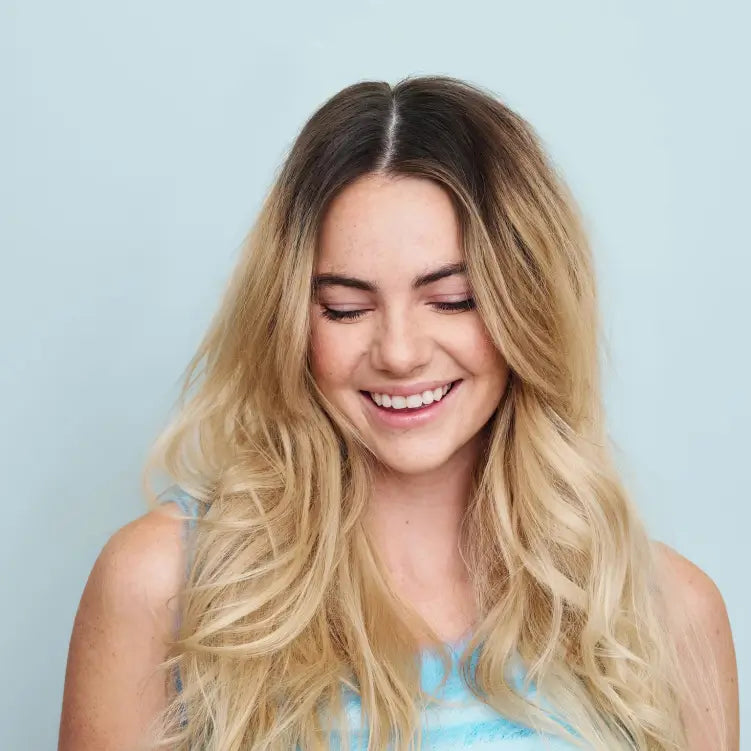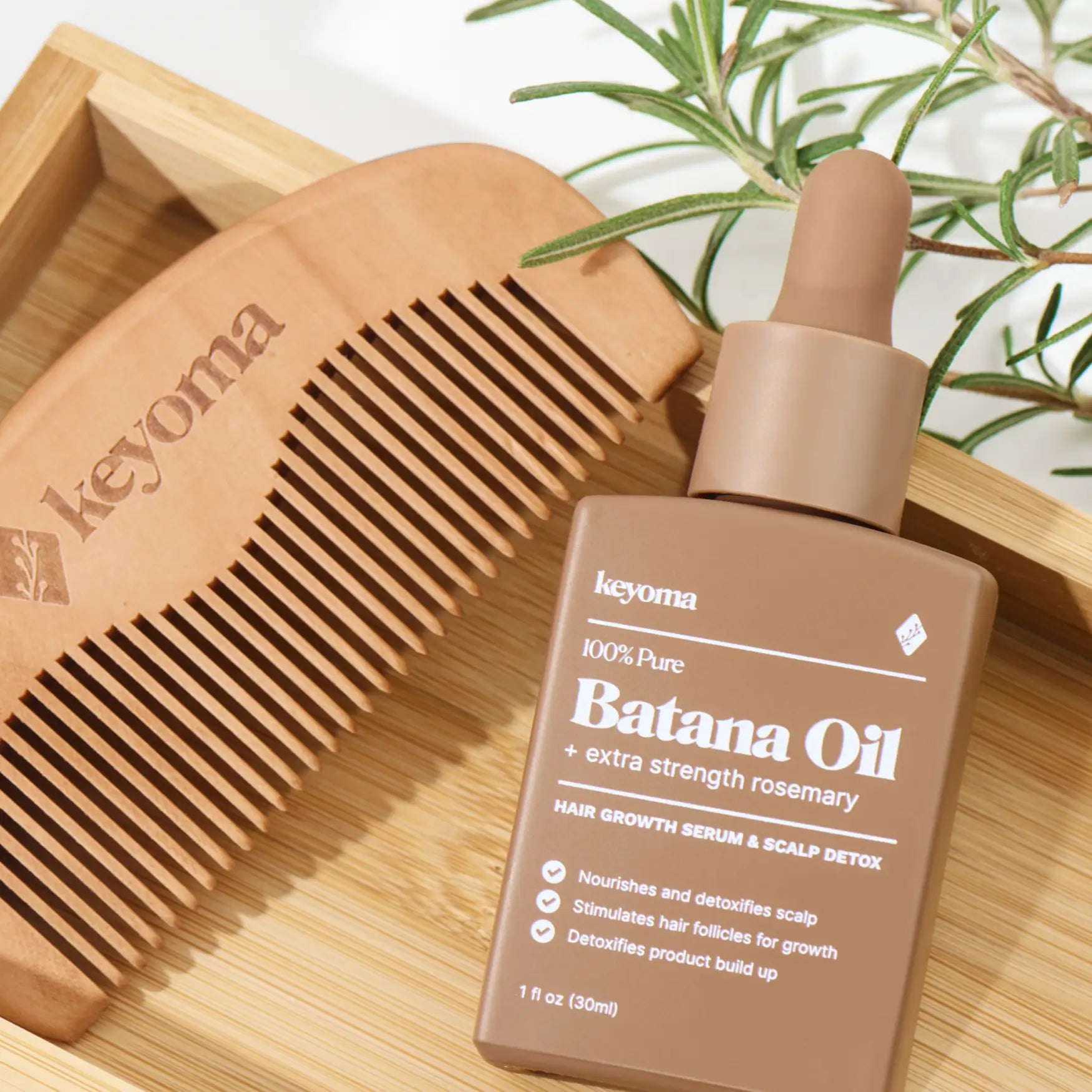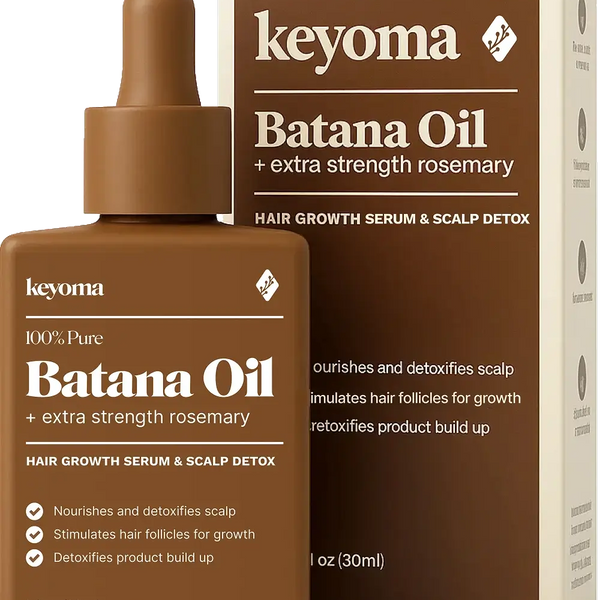In this article
“Healthy-looking” isn’t always healthy. Many of today's shampoos, conditioners, and serums that promise shine or smoothness contain ingredients that quietly dry out strands, irritate the scalp, or disrupt your natural hair balance.
The effects vary by formula, but some go far deeper than the surface, triggering issues like breakage, buildup, and even inflammation over time. That’s why reading the label matters just as much as choosing the right product.
In this guide, we’ll break down the most common bad ingredients found in hair care, explain why they’re harmful, and share safer, cleaner alternatives that actually support your hair’s long-term health.
Common Ingredients to Avoid in Hair Products
Parabens
Parabens are synthetic preservatives added to extend shelf life and prevent mold or bacterial growth in hair care products. You’ll commonly find them in shampoos, conditioners, leave-in creams, and even some styling gels or hair oils.
However, parabens are known to mimic estrogen. That hormonal interference may potentially disrupt endocrine function, and "result in several health issues, including weight gain, skin irritability, and reduced fertility", according to a 2024 study.
On product labels, parabens often appear as:
-
Methylparaben
-
Ethylparaben
-
Propylparaben
-
Butylparaben
When possible, always choose paraben-free products, especially if you have a sensitive scalp or are experiencing hormonal imbalance. Potassium sorbate and sodium benzoate are much safer alternatives.
Alcohols
Alcohols are solvents that help ingredients blend together or make styling sprays and foams dry faster. You’ll find them in shampoos, conditioners, serums, and gels, especially those labeled “quick-dry” or “lightweight.”
The ones to watch out for are short-chain drying alcohols, such as:
-
Ethanol
-
Isopropyl alcohol
-
SD alcohol
-
Propanol
Sure, alcohols can give you that clean, grease-free feeling at first, but they also strip away your scalp’s natural oils, leaving your strands rough, dull, and brittle.
That said, not all alcohols are bad. There’s a group called fatty alcohols that are actually moisturizing and protective, like cetyl, stearyl, and cetearyl alcohol. These are derived from natural sources such as coconut or palm oil. So if you see these on a label, no need to panic. Everything’s good.
Added Fragrances
Added fragrances are put in hair products to mask the natural scent of chemical ingredients or to give a fresh, pleasant smell that we often associate with "clean" or "salon-quality." They're often labeled:
-
Fragrance
-
Parfum
-
Aroma
-
Perfume
You can find it in almost everything. Shampoos, conditioners, dry shampoos, oils, creams, mousses, and sprays.
However, the term "fragrance" can legally hide a mix of dozens, sometimes hundreds, of different chemicals, many of which aren’t disclosed. Under FDA guidelines, companies don’t have to list individual fragrance ingredients, allowing harmful compounds to fly under the radar.
This matters because many synthetic fragrance compounds are known irritants. They can trigger:
-
Itchy or flaky scalp
-
Dryness and brittleness along the hair shaft
-
Allergic reactions or contact dermatitis
Those with sensitive scalps, eczema, or dry, coily and curly hair tend to react the worst.
In that regard, always do a patch test first before using a new product, especially if you've had scalp issues in the past.
Sulfates
Sulfates are powerful detergents used in hair products to create that rich, foamy lather. You’ll usually find them in shampoos, clarifying cleansers, and dandruff treatments.
The most common types include:
-
Sodium lauryl sulfate (SLS)
-
Sodium laureth sulfate (SLES)
-
Ammonium lauryl sulfate
Despite the deep-clean feel sulfates give, they also strip away your scalp’s natural moisture and protective oils, disrupting its barrier and drying out your strands. They’re also known to cause color fading in dyed hair. Simply put, for regular use, they’re too harsh for most hair types.
If you need to use them—say, to remove heavy styling buildup or manage an excessively oily scalp—do so occasionally and only as a reset. Always follow up with a hydrating conditioner or deep treatment afterward.
Better yet, look for gentler alternatives like sodium cocoyl isethionate or decyl glucoside.
Silicones
Silicones are synthetic compounds used in hair products to create slip, shine, and a smooth, frizz-free finish. They work by forming a waterproof coating over each strand, which helps lock in moisture and protect hair from humidity and heat damage.
You’ll usually find them in conditioners, leave-ins, serums, heat protectants, and styling creams.
But here’s where it gets tricky. Most silicones don’t wash out easily with water, which means they can build up quickly on the hair shaft and scalp, especially if you have low-porosity or fine hair.
Common names on labels to watch out for include:
-
Dimethicone
-
Cyclomethicone
-
Amodimethicone
-
Trimethicone
Now, silicones aren’t always bad. In fact, in high-humidity climates or when heat styling, they can actually offer helpful protection. Some newer, water-soluble silicones (like dimethicone copolyol) also rinse out more easily and don’t cause as much buildup.
Even so, it’s best to use them sparingly, since silicones naturally coat the hair and can eventually block moisture from getting in if overused.
Mineral Oil
Mineral oil is a byproduct of petroleum distillation. It’s added to hair care products as an emollient and sealant, meaning it helps trap hydration in the hair shaft and gives strands a smooth, glossy finish.
You’ll often find it in hair pomades, hair oils, leave-in conditioners, and anti-frizz serums. Common label names include:
-
Mineral oil
-
Liquid paraffin
-
Petrolatum (in some products)
At first glance, everything sounds beneficial, until you remember that proper hair care follows a key principle: hydrate first, then moisturize (and yes, there’s actually a big difference between the two). Mineral oil only covers the moisturize part.
Without proper hydration underneath, the hair’s inner layers stay dry even if the surface looks shiny. Over time, this can lead to buildup on the scalp and strands that feel heavy, greasy, or limp. That’s especially likely since mineral oil is also a comedogenic (pore-clogging) ingredient.
As an alternative, go for lightweight plant oils like argan, jojoba, or batana oil, which nourish and seal moisture without clogging or suffocating your scalp.
Coal Tar
Coal tar is a common ingredient often found in medicated shampoos formulated for severe dandruff, psoriasis, seborrheic dermatitis, or scalp eczema.
A byproduct of coal processing, it works by slowing the rapid growth of skin cells, which helps reduce flaking and itching in people with chronic scalp conditions. But it’s not without its drawbacks.
It’s especially drying for already delicate hair types, such as curly, coily, color-treated, or chemically processed hair. And while it may help calm scalp flare-ups, it doesn’t actually moisturize or strengthen the hair itself.
The health concerns are where it gets controversial. The International Agency for Research on Cancer (IARC) classifies coal tar as a Group 1 carcinogen when used in industrial settings, though concentrations found in over-the-counter shampoos are much lower.
Even so, its potential for irritation and long-term sensitivity has led many to look for gentler alternatives.
Label names to watch for include:
-
Coal tar
-
Tar
-
Tar distillate
-
Crude coal tar
Instead, consider safer alternatives like salicylic acid, ketoconazole, tea tree oil, or rosemary oil, which can help manage dandruff and irritation without the harsh effects.
Phthalates
Mainly used as plasticizers (to make plastics flexible), phthalates are chemical compounds added to products to make fragrances last longer and help formulas cling to your hair more effectively.
You’ll typically find them in scented shampoos, conditioners, hair sprays, styling gels, and sometimes even serums.
They don’t directly damage the hair shaft the way sulfates or alcohols do, but they’re known endocrine disruptors. That means they can interfere with hormone function and contribute to imbalances that are strongly linked to hair thinning.
You won’t always see “phthalates” spelled out on a label. Instead, look for:
-
Dibutyl phthalate (DBP)
-
Diethyl phthalate (DEP)
-
Dimethyl phthalate (DMP)
-
Or simply “Fragrance,” since phthalates are often hidden under that umbrella term
Safer swaps include naturally scented products using essential oils like rosemary, lavender, or peppermint.
Chemical Dyes
Chemical dyes are used in hair products to change or enhance hair color. You’ll find them in permanent, semi-permanent, and temporary hair coloring kits, as well as in toners and some color-depositing shampoos or conditioners.
In permanent dyes, this coloring process typically involves ammonia and peroxide to lift your natural pigment and allow new color to deposit. It’s effective, but also harsh.
Some ingredients found in chemical dyes, particularly aromatic amines (like p-phenylenediamine, or PPD), have raised concerns for their potential carcinogenic and allergenic effects when used frequently over time.
Occasional use, especially when spaced out and paired with deep conditioning, carries relatively low risk. But frequent or overlapping treatments can quickly build up damage, leading to weakened strands, dryness, and breakage.
Safer alternatives include:
-
Plant-based dyes like henna or cassia
-
Semi-permanent dyes with fewer harsh chemicals
-
Vegetable-based or herbal colorants (just be sure they’re truly clean and free of hidden synthetic additives)
Para-phenylenediamine (PPD)
PPD is a chemical dye compound commonly used in permanent hair color formulations. Its main purpose is to deliver deep, long-lasting color by bonding with other ingredients inside the hair shaft.
You’ll typically find it in dark-colored hair dyes, especially black and brown tones, and even in some temporary tattoos or eyelash tints.
However, PPD is a known skin allergen and potential sensitizer. When mixed with hydrogen peroxide (as is often the case in permanent dyes), it undergoes oxidation and penetrates the hair shaft. In that process, it can also trigger strong allergic reactions in some people.
Watch for these names on labels:
-
PPD
-
Para-phenylenediamine
-
p-Phenylenediamine
-
1,4-Benzenediamine
-
CI 76060
Polyethylene Glycols (PEG)
Polyethylene glycols, or PEGs, are petroleum-based compounds used in hair products mainly as thickeners, softeners, and emulsifiers. In short, they help mix oil- and water-based ingredients, giving your shampoo, conditioner, styling gels, and other treatments that smooth, creamy consistency.
Now, PEGs themselves aren't inherently toxic. However, they're often processed with ethylene oxide and 1,4-dioxane, both of which are known to be potentially carcinogenic and may be absorbed through compromised or broken skin.
Look for these names on labels:
-
PEG-40 Hydrogenated Castor Oil
-
PEG-12 Dimethicone
-
PEG-7 Glyceryl Cocoate
Triclosan
Triclosan is an antibacterial and antifungal agent commonly used in hair care products to reduce scalp bacteria and control odor or dandruff-like symptoms.
It can be helpful, especially for oily or acne-prone scalps, but here’s the issue: triclosan targets both the bad and the good bacteria.
As a result, it disrupts the natural balance of your scalp’s microbiome, which is essential for regulating oil production, reducing inflammation, and maintaining overall scalp health.
Look out for these names on labels:
-
Triclosan
-
Irgasan DP-300
For short-term or occasional therapeutic use, triclosan can provide relief in targeted formulas. But as a daily-use ingredient in hair care? It’s unnecessary and risky, especially when safer, gentler alternatives exist.
Safer alternatives include tea tree oil or rosemary oil (for natural antibacterial properties), zinc pyrithione or salicylic acid (for dandruff and scalp care), or apple cider vinegar rinses (to help rebalance the scalp microbiome).
Selenium Sulfide
Selenium sulfide is an antifungal agent often used in over-the-counter or prescription-strength dandruff shampoos, like those labeled as “anti-dandruff,” “medicated,” or "scalp relief."
On product labels, it’s often listed as:
-
Selenium sulfide
-
Selenium disulfide (less common)
Its primary role is to reduce the yeast (Malassezia) on the scalp, which is one of the leading causes of flaking and itching.
As great as that sounds, selenium sulfide can be extremely drying if used frequently, especially for already fragile or dry hair types.
That said, consider gentler alternatives like pyrithione zinc, ketoconazole, or tea tree oil or salicylic acid-based scalp cleansers.
What to Look For in Hair Care Products
We’ve already walked through some of the most common harmful ingredients in hair care. But if you want a quick cheat sheet to help you shop smarter (or clean out your bathroom shelf), below are some practical pointers:
-
Look for plant-based oils over synthetic sealants: Argan, jojoba, batana, and grapeseed oils hydrate and protect without clogging your follicles or suffocating your strands.
-
Choose products that say “sulfate-free” and “paraben-free”: These two are the biggest warning signs when it comes to long-term dryness, irritation, and hormonal imbalance.
-
Scan for transparent fragrance labeling: If the label just says “fragrance” or “parfum,” think twice, especially if you have a sensitive scalp. Go for products scented with essential oils or labeled “fragrance-free.”
-
Favor short ingredient lists with recognizable names: When you can pronounce and understand each item, you’re less likely to run into hidden toxins or irritants.
-
Check for PEG-free or ethoxylate-free formulas: If you see long chemical chains or “PEG-” followed by numbers, those may come with processing contaminants you’d rather avoid.
-
Buy from brands that publish their ingredient sourcing: Whether it's organic certification, non-toxic vetting, or green chemistry practices, transparency matters.
-
Go easy on hair dyes and chemical treatments: If you’re coloring, opt for plant-based or semi-permanent solutions, and always space out sessions to let your hair recover.
-
Choose pH-balanced and microbiome-friendly shampoos: These help your scalp stay calm and functional, especially if you’re ditching harsher cleansing agents.
Build a Routine Around Healthier, Natural Hair Care Ingredients
We’ve covered the biggest red flags, everything from parabens and sulfates to coal tar and selenium sulfide. But more than just knowing which ingredients to avoid, the real takeaway is this: listen to your hair and scalp.
If something causes itching, dryness, flaking, or dullness, ditch it. Toss it aside and move on. Don’t wait.
Instead, rebuild your routine around ingredients that actually support your hair’s needs. Oils like batana, jojoba, and rosemary aren’t just “extras”. They’re essential if you want to soothe the scalp, restore moisture, and strengthen strands without clogging or coating them with gunk.
Featured Product
100% Pure Batana Oil + Rosemary









